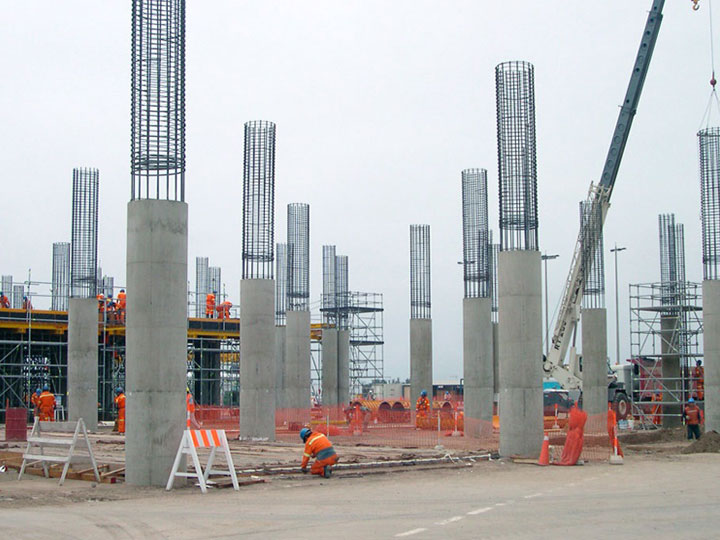Columns are probably the most important load-bearing member of any structure, since they carry all the vertical loads of the building and transport it to the bottom of the structure, the foundation. For this reason, you have to design columns very carefully, with zero margin of error. Today, we will see the cost estimation design of an RCC column for house, taking an example.
Columns are defined as the main compression member of the structure, having more length than width or breadth. That is to say, a column will be bearing most of the loads coming down from above, and it will have an effective length much greater than its least lateral dimension.
We need to estimate the steel and concrete before we start making the column, because we have to be very precise in our work. The following is an example scenario where we calculate the steel design on an RCC column for houses, particularly for a given design.
Let us say,
We are supposed to design a column for a house. The column is square in cross section, and it is short in comparison. There will be various forces acting on this column, but the major of this will be the axial load. The axial services compressive load acting on the column in question will be 600 KN.
Furthermore, when constructing the column, we will need to use M20 grade concrete (read more about the grades of concrete) for the compressive strength. However, to generate shearing strength and tensile strength, we need use reinforcement in the column, obviously. That steel quality in the reinforcements will be Fe-500. There will be 1% steel in the column by volume.
And to be on the safer side, we will have to maintain a safety margin of 1.5 in our calculation.
Now that we have the data, we can go ahead and figure out the quantity of materials in the column in question.
Area of Steel in concrete(Asc) = (1/100) x Ag
Area of Concrete (Ac)
= Gross area of column (Ag) – Area of steel(Asc) Ac
= Ag – 0.01 Ag
Ac = 0.99 Ag
Pu = Axial load on Column (600 x 1.5)
= 900 KN
Pu = 0.4 fck x Ac + 0.67 x Fy x Asc (IS: 456 – 2000 P – 71)
= 900 x 103
= 0.4 x 20 x ( 0.99 Ag) + 0.67 x 500 x 0.01 Ag
Ag = 79858 mm2
As because it is a square Column, the size of Column = √ (79858)
= 282.59 mm
Provide square column size = 285 mm x 285 mm
Ag as provided = (285 mm x 285 mm) = 81225 mm2
Asc = Area of steel in concrete
= 0.01 Ag
= 0.01 x 81225
= 812.25 mm2
Provide 8 nos. Of reinforcement bars with 12 mm Dia., and the steel bar having Ast (Area of steel) = 905 mm2
RCC Column Design
Dia of lateral ties: (as per IS 456 - 2000 P - 49)
1/4 x Dia. of larger bar
= 1/4 x 12
= 3 mm
At 8 mm, provide larger of 2 values (Provide 8 mm dia. lateral ties)
Pitch of Lateral Ties: (as per IS - 456 -2000 P - 49)
Least lateral dimension = 285 mm
And therefore 16 x Dia of smaller bar = 16 x 12
= 192 mm
As for the 300 mm provide smaller of 3 values (Provide Pitch = 190 mm)
Provide 8 mm Dia. lateral ties at 190 mm c/c.
There you go, now you have the working solution of the design of an RCC column for house. We hope this article was useful to you. Please let us know what you think! We would love to know about your thoughts and suggestions. Please use the comment box below to let us know.
To get more details, go through the following video tutorial.
